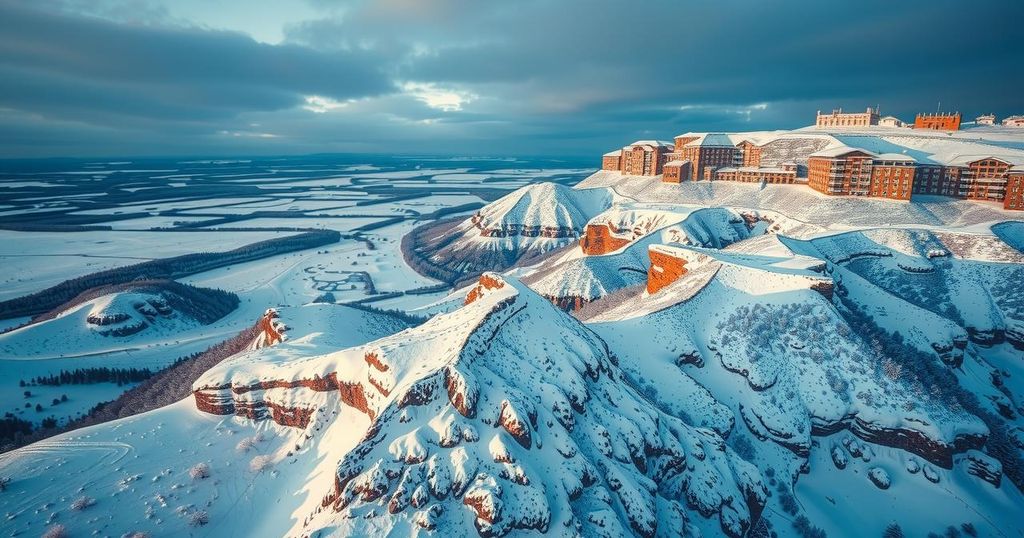Exploring Snowfall: 7 African Nations Where Winter Unfolds
Snowfall in Africa is a curious phenomenon, primarily concentrated in high-altitude regions of select nations. This article explores seven countries where snow can be observed, including South Africa, Morocco, Lesotho, Tanzania, Uganda, Algeria, and Ethiopia, each offering unique snowy landscapes that challenge common perceptions of the continent’s climate.
Snow is an unexpected phenomenon in Africa, a continent predominantly associated with warm climates. Yet, several nations showcase snowy landscapes due to their geographical features and elevations. The winter season brings a transformation as snow blankets these unique regions, particularly those at high altitudes where temperatures can significantly drop. The emergence of snow in these areas elicits curiosity and exploration, demonstrating the continent’s diverse climates and challenging common misconceptions about Africa’s natural environments. The following are seven African countries known to experience snow: 1. South Africa: Although primarily warm, certain areas such as Gauteng, parts of Johannesburg, and the Drakensberg Mountains can experience snowfall in winter, offering a different climatic perspective of the country. 2. Morocco: The diverse terrain of Morocco includes the Atlas Mountains, where regular snowfall occurs in winter. Notably, Ifrane is a charming town compared to Switzerland due to its winter scenery and architecture. 3. Lesotho: As a high-altitude landlocked country, every region of Lesotho lies above 1,000 meters. This elevation during winter months results in snowfall, transforming the landscape into a winter wonderland. 4. Tanzania: Snowfall is primarily observed on Mt. Kilimanjaro, Africa’s highest peak. While lower regions experience milder climates, the summit presents arctic conditions, especially from mid-June to October, with heaviest snowfall occurring in December. 5. Uganda: The Rwenzori Mountains in Uganda frequently experience snow, creating a stunning contrast to surrounding landscapes. Adventurous travelers often hike to the snow-covered peaks for a unique experience. 6. Algeria: Despite its dry climate, parts of the Tell Atlas in Algeria receive snowfall during the winter months. Particularly in the northern mountainous regions like the Kabylie and Aurès Mountains, snow provides a rare change from usual conditions. 7. Ethiopia: Ethiopia’s varied terrains allow for occasional snowfall, particularly in the Simien Mountains, recognized as a UNESCO World Heritage Site, where altitudes exceed 4,500 meters, attracting hikers and nature enthusiasts. This remarkable phenomenon of snowfall in Africa highlights the rich diversity of the continent’s climates, inviting exploration and challenging common assumptions about its environmental characteristics.
The occurrence of snowfall in several African nations is often overshadowed by the prevailing image of the continent as predominantly warm. However, specific regions, particularly those with higher elevations, experience unique climatic conditions conducive to snow. This unexpected weather pattern represents a fascinating aspect of Africa’s geographical diversity, reflecting how elevation, terrain, and local climate can combine to create environments that defy stereotype. The phenomenon invites not only curiosity and exploration but also a deeper appreciation for the continent’s multifaceted natural environments.
In conclusion, the seven African nations highlighted—South Africa, Morocco, Lesotho, Tanzania, Uganda, Algeria, and Ethiopia—demonstrate that snow is indeed a part of the continent’s climatic variability. These regions, primarily based on their high altitudes and unique geological features, provide a striking contrast to the stereotype of a uniformly warm continent. By showcasing snowy landscapes, these countries invite individuals to explore the natural beauty and diversity Africa holds beyond the expected cultural narrative.
Original Source: businessday.ng




Post Comment